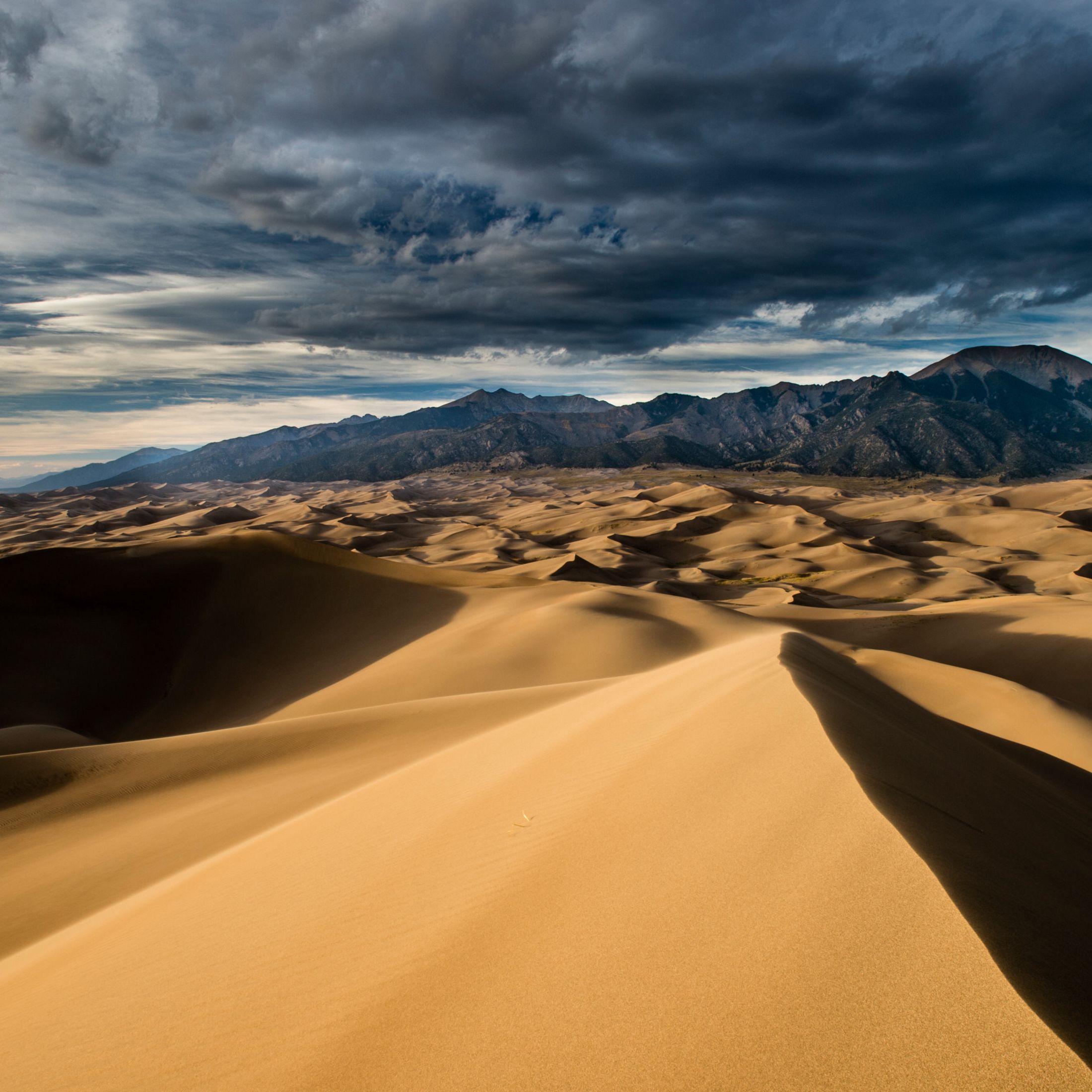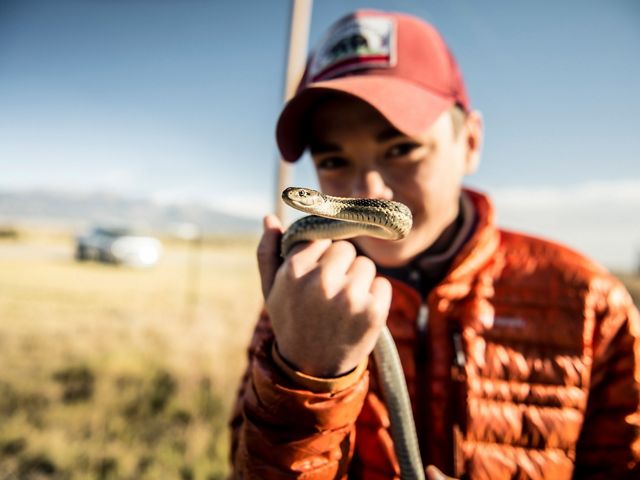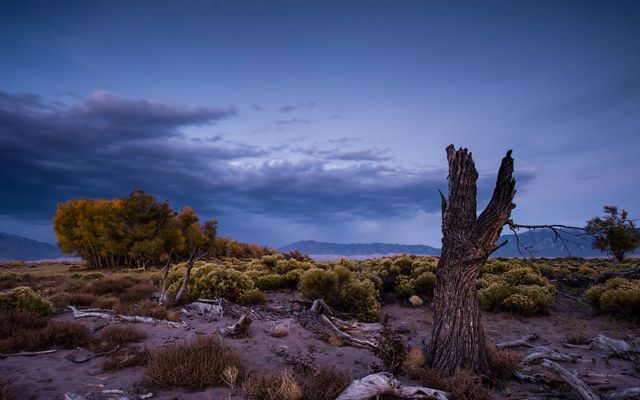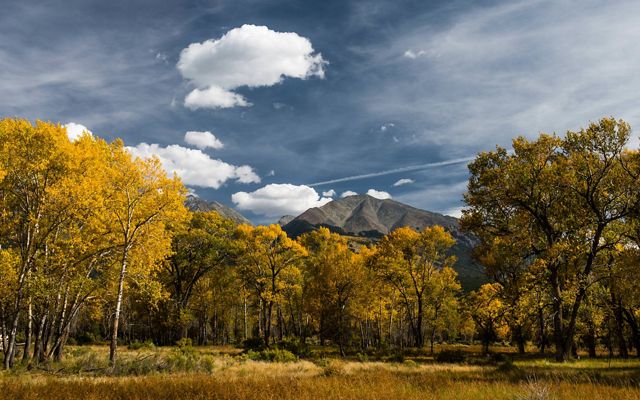
Shifting Ground
A stunning landscape is saved after a decade-long war over its water.
May/June 2013
In the early light of a spring morning in 1989, a fellow barged into the Crestone, Colorado, bakery where Christine Canaly worked, hungry for breakfast. The man, it turned out, was vice president of a company that planned to spend $150 million to drill 100 wells and pipe water from the rural San Luis Valley to the Denver suburbs, more than 100 miles away. Those suburbs, he said, would pay top dollar for the water, and the project would be a financial bonanza for everyone in the San Luis Valley.
Canaly was worried by the news. Rumors about such a project had already been swirling through the valley. “People suspected it,” she says. “But no one came out and full-blown said it.”
A few days later, Canaly drove her Volkswagen Rabbit to pick up 400 pounds of flour from miller and rancher Greg Gosar, and she mentioned the conversation to him. In the arid West, water can be an issue as contentious as sports and religion, and Gosar was concerned himself. “Water rights,” he says, “are everyone’s business around here.”
In fact, Gosar had been chewing over a conversation that he’d had a year earlier. The principal owner of the sprawling, 97,000-acre Baca Ranch, a Canadian oilman named Maurice Strong, had been applying for extensive water rights in the valley. Gosar had asked Strong what he planned to do with the water. “Maurice told me, ‘We’re going to put in some potatoes, and we’re gonna plant quinoa,’” he recalls.
But Gosar didn’t quite believe it. And now, talking with Canaly, all the pieces began to fit together. Strong was the head of the same company that Canaly’s hungry visitor worked for. And if the massive water-export plan went through, there was a very good chance that the project would suck the valley’s farms and streams dry. Gosar was angry.
“Let’s go get these guys,” he told Canaly.
That was all she needed to hear. Within a few weeks, she and Gosar had formed a group called Citizens for San Luis Valley Water. Then, by happenstance, she met David Robbins, an attorney for the district that supplies water to local farmers.
“He’s this imposing, brilliant guy with a huge handlebar mustache,” says Canaly. “He told me they were already planning a lawsuit to stop the project. I asked him how he felt about citizens’ groups. He looked at me and said, ‘I love citizens’ groups.’”
The two began putting together a battle plan. Robbins put Citizens for San Luis Valley Water in charge of a campaign to persuade the valley’s voters to borrow money to fund the court fight. “We had 25 women working the phones,” says Canaly. “We divided up the voter registration list, and everyone knew someone.”
The group organized seminars, printed bumper stickers, placed op-ed pieces in local newspapers and held benefit concerts to raise awareness. In a special election a few months later, 92 percent of voters approved a ballot measure to help fight Strong’s company, American Water Development, Incorporated (AWDI).
“It was unheard of around here for people to raise their own taxes to help the government with anything,” says Gosar. That victory was just the first of dozens that would not only stop the water project, but lead to the creation of a national park, a wildlife refuge and, as of December 2012, the protection of more than half a million acres of land extending south almost to New Mexico.

On a brilliant blue-sky day last October, Heidi Sherk, director of external affairs for The Nature Conservancy in Colorado, is making the rounds of the vast Baca Ranch with Ron Garcia, a U.S. Fish and Wildlife Service refuge manager, and Fred Bunch, a chief of resources management with the National Park Service. They stop the Suburban they’re driving beside an irrigation ditch. Miles of grassland are broken only by cottonwood trees and the occasional willow thicket growing alongside the ranch’s irrigation ditches. Twenty miles to the west, the dead-flat San Luis Valley tilts up into the forested San Juan range. The jagged ramparts of the 14,000-foot Sangre de Cristos loom hard to the east; to the south, the open valley stretches over the horizon into New Mexico.
“Around here, it’s always about water,” says Bunch, a bear of a man with the demeanor of a children’s television host. “The San Luis Valley is a legitimate desert. It only gets 7 to 11 inches of precipitation a year—but it’s also a cup full of water.” He nods to the mountains bordering the valley. “In the spring, huge amounts of snow melt and run down into the aquifers below us,” he says. Historically, that cup fi lled to the brim each spring, and much of the Baca was a wetland teeming with small, ground-nesting waterbirds well into summer.
These days, thousands of wells tap the aquifers, making much of the San Luis a patchwork of green irrigated circles planted with barley, potatoes and alfalfa. The water has been meticulously apportioned and is carefully monitored by the state government. Which is why AWDI’s plan caused such an uproar. Had the company taken as much water as it planned to, many of the existing farm wells would have been jeopardized, not to mention the rich ecology of the ranch, home to a host of plants and animals, including the slender spiderflower, pronghorns, Wilson’s phalaropes and northern leopard frogs.
The project would also have threatened the valley’s crown jewel, Great Sand Dunes National Monument. The 30-square-mile main fi eld of 700-foot-tall dunes lies a few miles southeast, lapping against the Sangre de Cristos like bright white waves. Over the centuries, westerly winds have blown across the valley and funneled through three mountain passes, dropping sand gathered from an ancient lake that once fi lled the valley at their base. Creeks that fl ow out of the Sangre de Cristos feed the sand back to the dune fi eld, says Bunch, “like a sand conveyor belt, ensuring the dunes stay put, walking in place.”
But if the project lowered the water table, the creeks would dry up, and the dunes would be lost, taking with them six species found only there, including the Great Sand Dunes tiger beetle, the circus beetle and the clown beetle. “Luckily,” says Bunch, “the citizens of the San Luis Valley locked arms against AWDI.”

In 1990, while attorney David Robbins prepared his case, Citizens for San Luis Valley Water held meetings and seminars in the dozen towns scattered across the valley and filled the state’s papers with editorials. Three thousand people packed into Ski Hi Park in the town of Monte Vista for a benefit concert by musician Michael Martin Murphey. Even the community’s police cars sported anti-AWDI bumper stickers.
In a five-week-long trial in the fall of 1991, Robbins and his team—joined by the National Park Service and the Colorado Division of Wildlife—soundly defeated AWDI. But the victory was short-lived.
One of the biggest opponents of the water project had been a local rancher named Gary Boyce, who wore a duster coat and a holstered six-shooter, drove a purple Humvee, and financed and edited a periodic anti-AWDI newspaper. After AWDI’s defeat in court, Boyce and a group of investors bought the Baca Ranch from the company. Then, in an unexpected twist, they announced their own water export project. They also placed two initiatives on the statewide ballot that, their critics maintained, were designed to tie up the valley’s farmers in court and empty their pocketbooks with legal bills.
And so Citizens for San Luis Valley Water went back to work. This time its members raised $1 million to fight the initiatives and take up the cause in the media. Nearly every newspaper in Colorado came out against the initiatives, and in the November 1998 election, voters turned them down by 96 and 97 percent, respectively.

By 1999, people in the San Luis Valley were desperate to put an end to the water war. And an elegant solution suggested itself: Take the Baca’s water out of play forever by incorporating the ranch into the adjacent Great Sand Dunes National Monument—and, in the process, transform the monument into a national park and create a new national wildlife refuge. Doing that would bring more visitors and revenue to the valley and permanent protection to 97,000 acres of ecologically valuable open land.
The Conservancy had just bought the neighboring 100,000-acre Medano-Zapata Ranch. The valley’s leaders asked, if Congress approved the national park and promised funding, would The Nature Conservancy broker the deal? “Between the national park, the Rio Grande National Forest and our holdings, we’d create a 400,000-acre block of contiguous conserved land,” says the Conservancy’s Sherk.
Suddenly, things started happening quickly. In December 1999, Senators Wayne Allard and Ben Nighthorse Campbell, U.S. Rep. Scott McInnis, state Attorney General Ken Salazar and Secretary of the Interior Bruce Babbit traveled to the monument. The politicians wandered off together into the dunes for a private conference, and there agreed to work together to turn the plan into reality.
Just 11 months later—unheard of for legislation dealing with the creation of a national park—Congress authorized the purchase of the Baca Ranch. Still, legal wrangling continued to hold up the sale. “There were plenty of times we didn’t think the deal would go through,” says Sherk, who worked to persuade Congress to keep setting aside funds while negotiations dragged on.
Finally, in September 2004—four years after negotiations began—the $35 million deal was completed, marking the largest single transaction to date for The Nature Conservancy in Colorado. Great Sand Dunes National Monument nearly quadrupled in size and was upgraded to a national park; the Rio Grande National Forest claimed the alpine portion of Baca Ranch, including 14,165-foot Kit Carson Peak; and 54,000 acres of grassland and wetland habitat became the Baca National Wildlife Refuge.
The regional reaction was jubilant. “The success of the Baca Ranch deal was a tribute to the residents of the San Luis Valley—to their ability to work together and dedicate their efforts to conserve the valley’s water,” says Ken Salazar, who is a native of the valley and, until this March, served as U.S. secretary of the interior. “Protecting the Great Sand Dunes is one of the great conservation accomplishments of our time.”
And even more land has been protected since then. Last year, the 170,000-acre Sangre de Cristo Conservation Area was created after landowner Louis Bacon placed conservation easements on his Trinchera and Blanca ranches, extending protection nearly all the way to New Mexico.

It’s late afternoon, and Fred Bunch steers the Suburban toward Great Sand Dunes National Park. “Oh, wow,” he says, “look at the light on the dunes.” They are practically glowing, spotlighted by rich, lowangle sunlight. Each dune is framed by a sharp crescent of shadow, and the whole field pops against the dark wall of mountains. It’s a remarkable sight, one that, even after 25 years at the park and a lifetime in the valley, Bunch still doesn’t take for granted.
Bunch says he’s grateful for the park, and the wideopen vistas surrounding it—vistas looking across the Baca National Wildlife Refuge and the Conservancy’s Medano-Zapata Ranch. “Our backs were really against the wall—not just the park, but the whole valley,” he says. “A lot of people stepped up to make this happen—locals, politicians, voters, The Nature Conservancy.”
“There’s a saying amongst land managers,” says Bunch, as he leans forward over the steering wheel to get a better view of the orange, glowing dunes. “To be a good steward, you need good neighbors.”